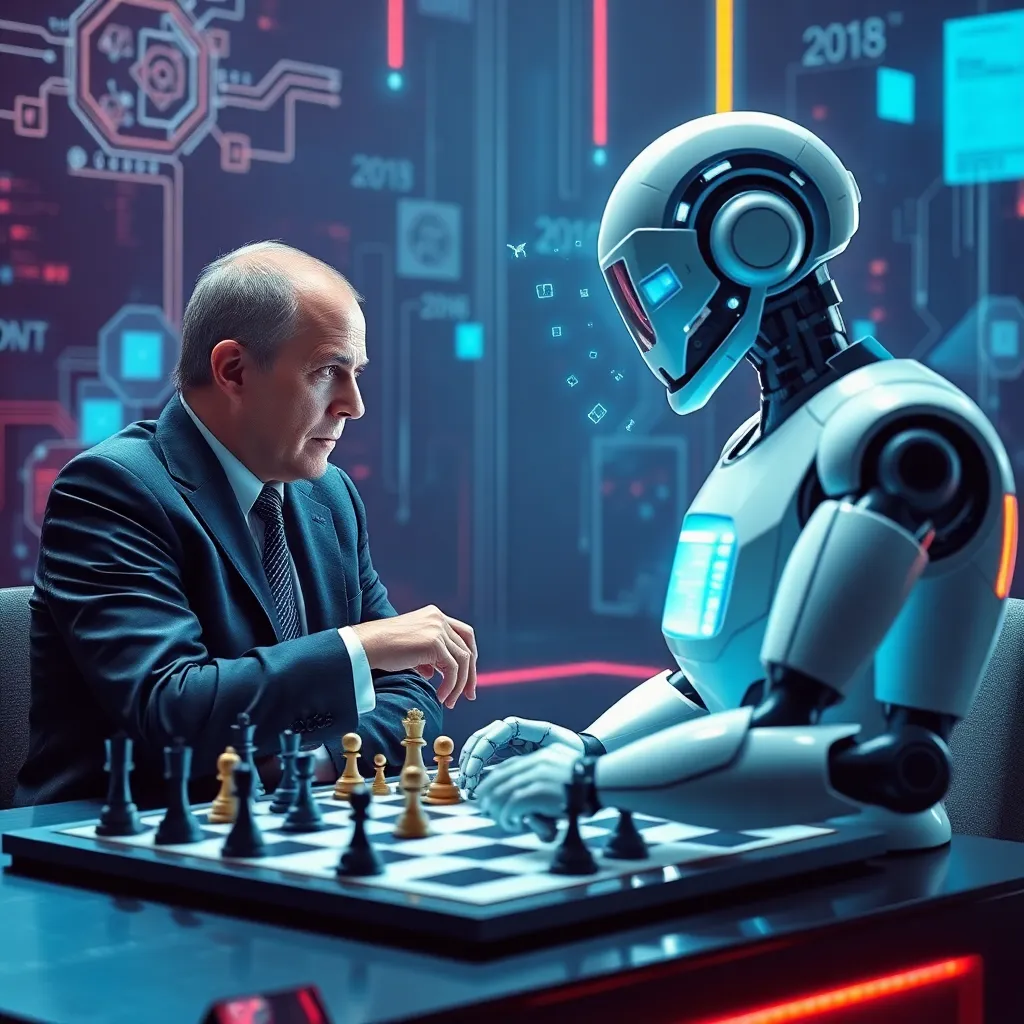The Future of Humanity and Machines: A Unified Partnership

Garry Kasparov, one of the greatest chess grandmasters in history, made a profound statement after his historic match against IBM's Deep Blue in 1997: "The future is not humans vs. machines, but humans + machines." This quote encapsulates a vision of the future that challenges the conventional narrative of technology as an adversary. Instead, it offers a more optimistic and pragmatic outlook, one where the power of human intelligence and creativity is amplified by the precision and efficiency of machines.
The Clash with Deep Blue
Kasparov’s legendary clash with Deep Blue was more than just a battle of intellects; it was a cultural moment that epitomized the tensions between human superiority and artificial intelligence (AI). At the time, the idea that a machine could outthink a human was unthinkable. When Deep Blue defeated Kasparov in 1997, it marked a turning point in the relationship between humans and machines. Many feared that AI would eventually replace human workers, creativity, and ingenuity. The narrative became one of competition, man vs. machine.
However, Kasparov’s response to the defeat was both reflective and forward-looking. Rather than seeing the victory of Deep Blue as a sign of impending obsolescence for humans, he recognized it as an opportunity to rethink how we, as humans, could work in partnership with machines. His perspective is a subtle yet powerful reminder that technology should not be viewed solely as a rival but as a tool, one that can be used to complement human abilities.
Human + Machine: A Synergistic Future
Kasparov’s vision of “humans + machines” invites us to imagine a future where the two forces collaborate, rather than clash. It recognizes that machines, particularly AI, are not inherently adversarial. They are, at their core, designed to enhance human capabilities.
In practice, this partnership already exists in many fields. In healthcare, AI algorithms are used to analyze medical data with a level of precision that humans alone cannot achieve. However, these machines rely on the expertise and emotional intelligence of doctors and nurses to provide compassionate care and interpret complex cases. In industries like finance, AI helps predict market trends and streamline transactions, but it is the human analysts who make the final decisions, incorporating ethical considerations and emotional intelligence into their strategies.
Perhaps one of the most powerful examples of human-machine collaboration can be seen in the world of art and creativity. AI tools like generative art programs or AI-assisted music composition are opening new avenues for artistic expression. However, the human touch, creativity, emotion, intention, remains at the heart of the process. Machines may create, but it is humans who imbue that creation with meaning.
The Role of Humans in the Age of AI
While AI and automation have the potential to revolutionize industries, they will not replace the irreplaceable elements of human life. Empathy, intuition, and creativity, qualities that machines still struggle to replicate, are key aspects of what makes us human. Machines excel at processing data, making predictions, and performing repetitive tasks with speed and accuracy. But when it comes to complex decision-making that requires nuance, ethics, and understanding of the human experience, it is humans who remain in the driver’s seat.
Furthermore, humans possess the ability to adapt, to innovate, and to think in ways that are not purely logical or systematic. While machines are limited by the algorithms and data they are trained on, humans have the capacity for abstract thinking, self-reflection, and creativity that goes beyond the confines of code. In short, machines can extend the reach of human potential, but they cannot replace the uniquely human qualities that define us.
The Path Forward: Collaboration, Not Competition
As we continue to integrate AI into our lives, it’s important that we focus on how to leverage this technology for the betterment of humanity. The future Kasparov envisions is one where we recognize the strengths of both humans and machines and foster a collaborative approach. This requires a shift in mindset from fear and resistance to curiosity and openness. Instead of fearing job losses or technological domination, we should embrace the opportunities that human-machine collaboration can bring, from solving complex global challenges to enhancing our daily lives.
For instance, in education, AI can help personalize learning, catering to the unique needs of each student. In environmental sustainability, AI can help optimize energy use, reduce waste, and predict climate changes with greater accuracy. The potential for positive change is limitless when humans and machines work together.
Takeaway: A New Vision for the Future
Garry Kasparov’s words, “The future is not humans vs. machines, but humans + machines,” are a call for a new vision of the future, one in which the strengths of humanity and technology are combined, rather than pitted against each other. By focusing on collaboration rather than competition, we can create a world where technology amplifies human potential, allowing us to solve problems, create new possibilities, and ultimately thrive together. The future is not one where machines rule over humans, but where humans and machines work hand in hand to create a brighter, more innovative world.